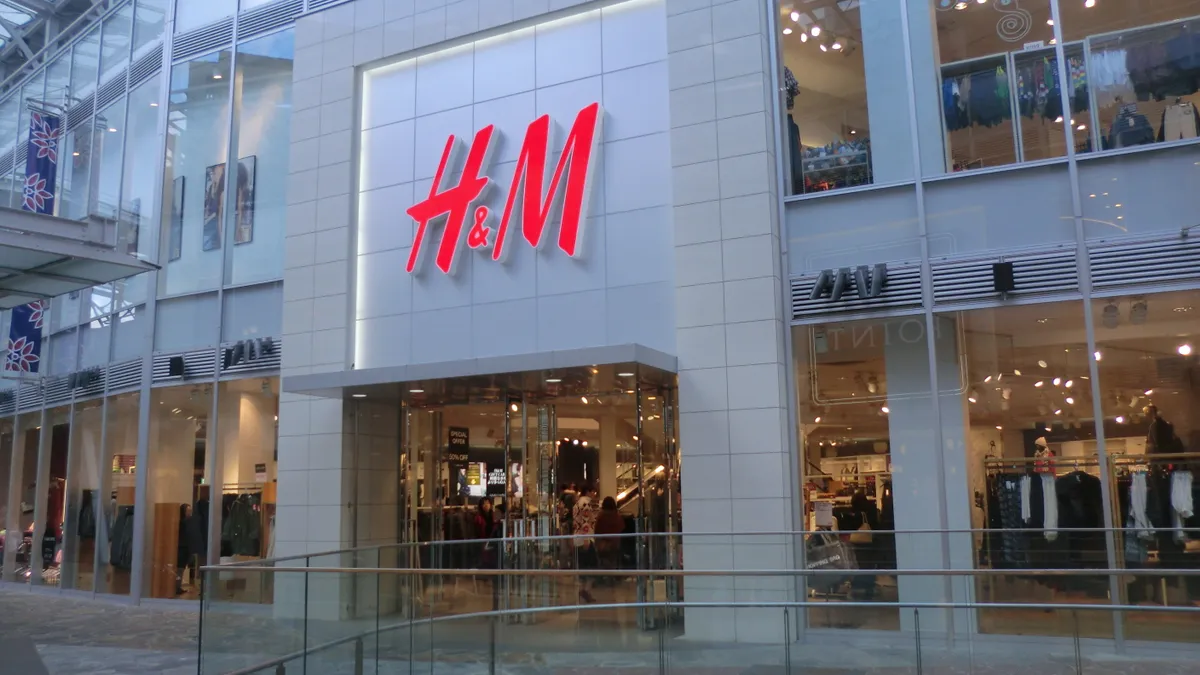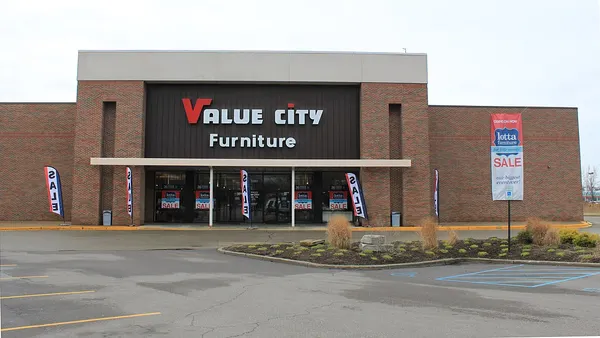Dive Brief:
-
As inventories rose and sales tanked in the fourth quarter, H&M on Friday announced it's picking up the pace on a transformation plan. Q4 sales fell 4% to 50.39 billion kronor ($5.97 billion) from the same period a year ago and foot traffic to stores declined, according to a company press release.
-
CEO Karl-Johan Persson said the company would scale back its physical expansion and close some stores, but its collaboration with Alibaba is expanding. H&M and H&M Home brands will begin selling on Tmall and the company is in "far advanced discussions" to sell the rest of H&M’s brands through the Chinese e-commerce marketplace, according to another press release.
-
Also last week, H&M rival Inditex reported a net sales rise of 10% to €17.96 billion ($21 billion) in the first nine months of fiscal 2017. The Spanish apparel company, owner of Zara, also announced the rollout of same-day delivery, automated in-store pick-up points for online orders and next-day delivery in six markets, including in Spain, France, the U.K. and China.
Dive Insight:
The fast-fashion retailer is adjusting its transformation plan to emphasize greater integration of its e-commerce and brick-and-mortar operations. Like many other retailers, that means H&M will be closing existing stores and opening fewer new locations.
The company showed signs of this emphasis this summer. The flagship H&M brand has or will establish eight new online stores globally this year, with a site planned for India next year. It is now available in 41 markets and the new Arket banner announced in March will launch with 18 online markets this year. Expectations are for online sales to grow by at least 25% each year going forward, the company said at the time.
At that point, stores were still being singled out as key to the company’s fortunes, giving it "a unique proximity to our customers, which is a great asset and advantage." But its brick-and-mortar expansion — some 500 new stores set to open this year, the company said in July — is being reined in.
The most recent quarter was weak for the company’s physical stores, which Persson blamed on a "challenging market situation with reduced footfall to stores due to the ongoing shift in the industry." But the company also suffered from fashion misses — which Persson referred to in a press release as "imbalances in parts of the H&M brand’s assortment composition."
"In order to correct this, a number of actions have been taken," he said of that, adding that the H&M brand’s management team has "recently been strengthened."
While last week it was easy to contrast the two fast-fashion companies’ divergent fortunes, H&M could also look to Zara as a model to help it catch up. Commenting on the Spanish retailer’s online-offline model, Inditex CEO Pablo Isla noted "increasingly integrated management of the platform, which is translating into value-added customer services" and highlighted services such as same-day delivery, next-day delivery and automated in-store pick-up points for online orders. The retailer also refreshes its featured assortments online the same time it does in stores, he also noted.















